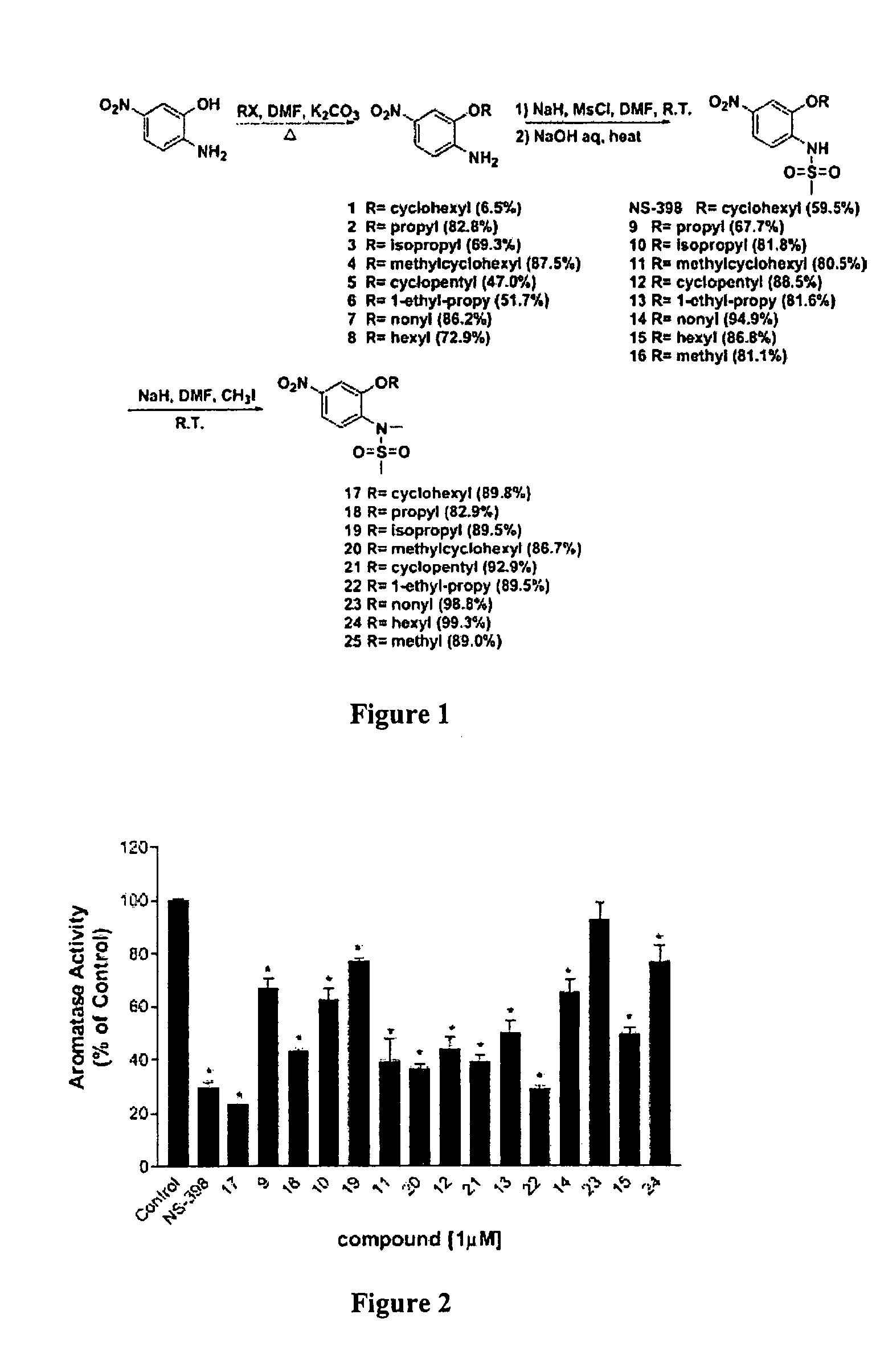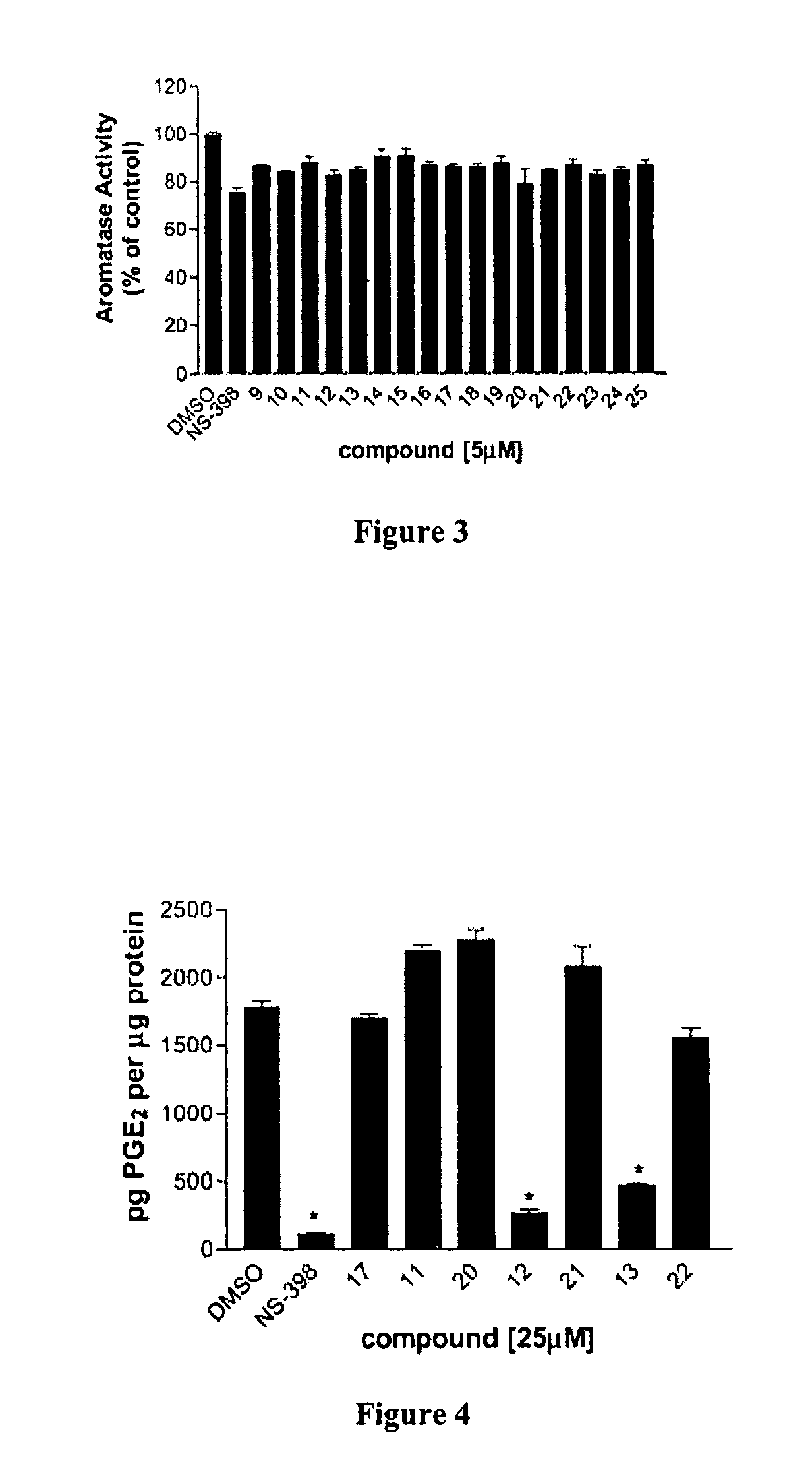Sulfonanilide analogs as selective aromatase modulators (SAMs)
a technology of aromatase and sulfonanilide, which is applied in the direction of amide active ingredients, biocide, drug compositions, etc., can solve the problems of increased risk of endometrial cancer, and reduced bone density, and achieve the effect of suppressing aromatase activity expression
- Summary
- Abstract
- Description
- Claims
- Application Information
AI Technical Summary
Problems solved by technology
Method used
Image
Examples
examples
[0069]Chemistry. Chemicals were commercially available and used as received without further purification unless otherwise noted. Moisture sensitive reactions were carried out under a dry argon atmosphere in flame-dried glassware. Solvents were distilled before use under argon. Thin-layer chromatography was performed on precoated silica gel F254 plates (Whatman). Silica gel column chromatography was performed using silica gel 60A (Merck, 230-400 Mesh). High-resolution electrospray ionization mass spectra were obtained on the Micromass QTOF Electrospray mass spectrometer at The Ohio State Chemical Instrumentation Center. All the NMR spectra were recorded on a Bruker DPX 250 and 400 MHz in either DMSO-d6 or CDCl3. Chemical shifts (δ) for 1H NMR spectra are reported in parts per million to residual solvent protons.
[0070]Synthesis. All the compounds were synthesized according to a general procedure described in Scheme 1 (FIG. 1), in which R represents alkyl structures and X represents ha...
PUM
| Property | Measurement | Unit |
|---|---|---|
| pH | aaaaa | aaaaa |
| pH | aaaaa | aaaaa |
| incubation volume | aaaaa | aaaaa |
Abstract
Description
Claims
Application Information
 Login to View More
Login to View More - R&D
- Intellectual Property
- Life Sciences
- Materials
- Tech Scout
- Unparalleled Data Quality
- Higher Quality Content
- 60% Fewer Hallucinations
Browse by: Latest US Patents, China's latest patents, Technical Efficacy Thesaurus, Application Domain, Technology Topic, Popular Technical Reports.
© 2025 PatSnap. All rights reserved.Legal|Privacy policy|Modern Slavery Act Transparency Statement|Sitemap|About US| Contact US: help@patsnap.com



